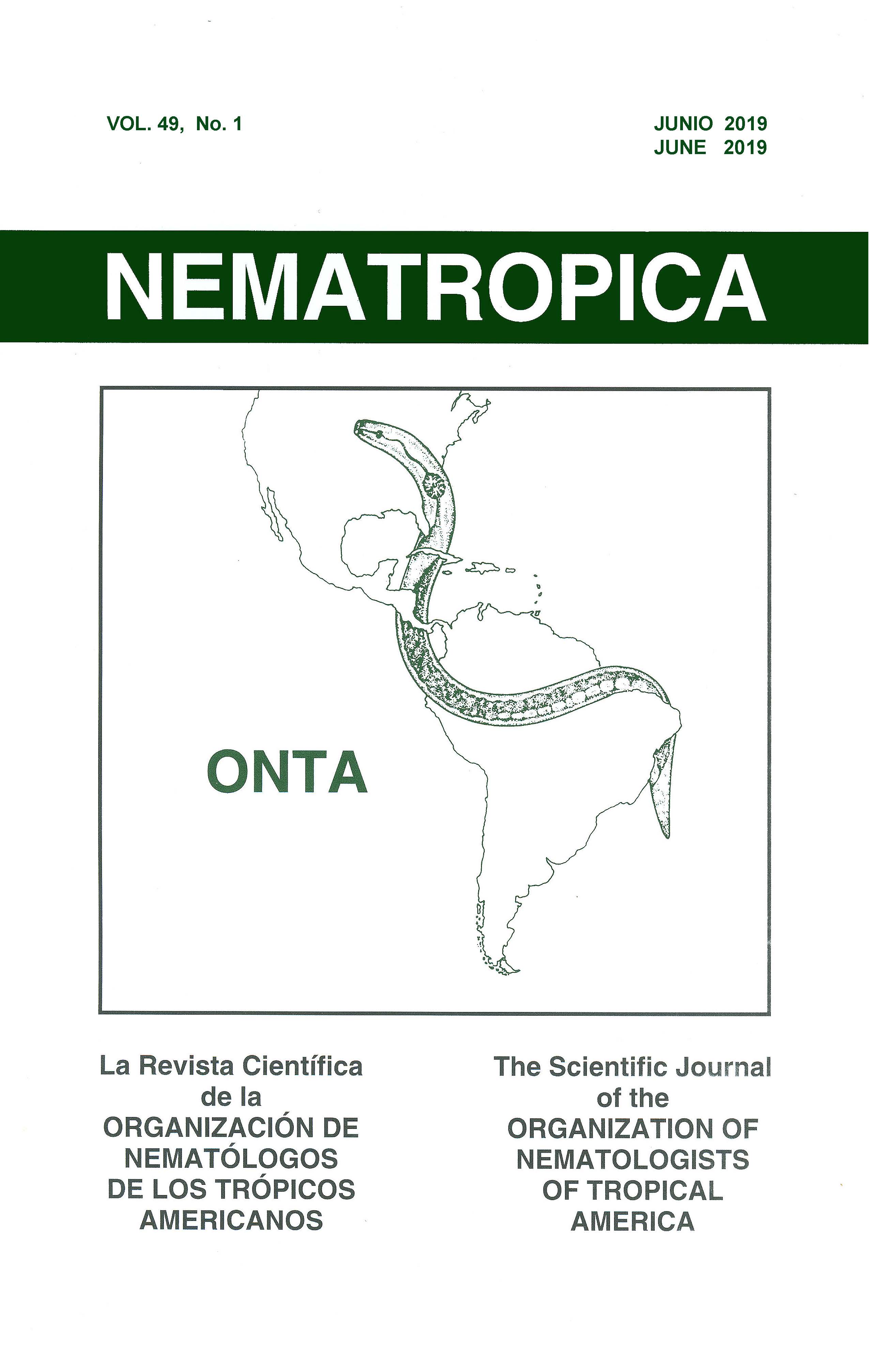PHYLOGENETIC RELATIONSHIPS AMONG MEXICAN POPULATIONS OF NACOBBUS ABERRANS (NEMATODA, PRATYLENCHIDAE) REVEAL THE EXISTENCE OF CRYPTIC (COMPLEX) SPECIES
Abstract
The plant-parasitic nematode Nacobbus aberrans is an agricultural pest of quarantine importance. The taxonomic status of the nematode has been the subject of controversy due to wide degree of variation exhibited by the species. This variability has led to the suggestion that N. aberrans is actually a species complex rather than a single species. Nevertheless, all previous studies revealed a limited genetic variability in Mexican populations. The objective of this study was to analyze, for the first time, the Cytochrome c Oxidase Subunit 1 (COI) gene to investigate its variability in 15 Mexican populations of N. aberrans and to analyze the phylogenetic relationships of N. aberrans with other plant-parasitic nematodes. COI sequences revealed significant intraspecific variation, and the phylogenetic inference showed the formation of two separate groups with different levels of intragroup variability. These results indicate the possibility of the existence of more than one group of N. aberrans species in Mexico. COI phylogenetic analyses of N. aberrans with related plant-parasitic nematodes confirms its proximity to both cyst and root-knot nematodes.

